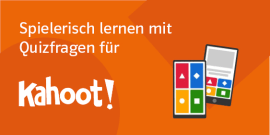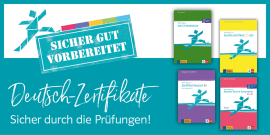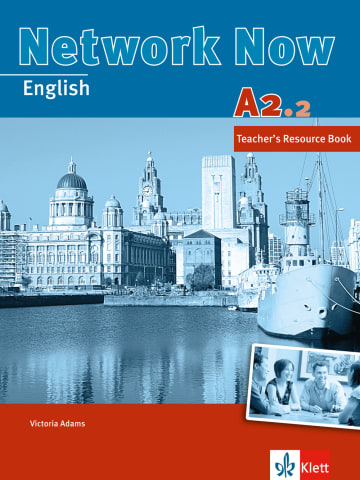
02.01.2012
• Now me: Now blog, Now explore the Internet
As in the former ‘Now’ books this ‘page for me and about me’ is found at the end of every unit. In ‘Now A2.2’ it features Now blog written by Kathy about her daily life. This theme-related blog is followed by space for students to complete their own blog focusing on events in their own lives, so making their work very personalized. Writing about what is going on in our own lives or about our own experiences is a great motivator for learning. Encourage students to photocopy the page and put it in their portfolio.
Underneath the blog, you’ll find Now explore the Internet. This section encourages students to look at authentic English language websites.
Tip: Before moving on to the next unit, ask students about their search on the Internet sites. Which unusual hotel would they like (Unit 1), which clothes would they choose for a job interview (Unit 2), and so on. In addition, to encourage the students to look at more websites, you could also ask them to change the language to English on German websites they are familiar with – their local airport, international retailers or travel review sites, for example.
• FAQ
These are found either at the end of Step 1 or Step 2 in the Selfstudy section and there are more frequently asked questions with more detailed answers on pages 198 and 199. They replace the former ‘Out and about’. These FAQ reflect the kind of questions that more advanced learners may ask in order to improve their independent learning.
Tip: Look at the questions at the back of the book together (perhaps you could ask the students to read them for homework). Then discuss them in the lesson and see which of the suggestions they think are most helpful. Encourage your students to think of more ideas to help their learning and don’t worry if they want to explain more complex ideas in German. For the reading FAQ, ‘What can I read that’s not too difficult?’ (see Unit 1) for example, they may like to set up a class lending library, where they each write a (very) short review of the book when they have finished reading.
• Write it right
In Step 3 in each unit you’ll find the new feature Write it right – a section that deals with punctuation and spelling. It looks at writing in a very detailed way – apostrophes and use of capital letters, for example, and should help the students to avoid typical mistakes.
Tip: When students concentrate on learning apostrophes, they sometimes try to overuse them, particularly with plural nouns ending in s. (This is sometimes called the Greengrocer’s apostrophe in English – carrot’s, onion’s etc.). Watch out for this in your students’ written work.
• Now I can: Now you choose
Another section at the end of every unit is the ‘Now I can’ section with the new feature Now you choose, which offers three tasks of graded difficulty. This allows more confident students to take on a more challenging task and less confident students to complete a less complex task.
Tip: Mixed ability teaching can be difficult, but you can help avoid some problems by thinking ahead:
What's new in Now A2.2?
Teaching tip
This month we take a look at the new features in Now A2.2.
• Now me: Now blog, Now explore the Internet
As in the former ‘Now’ books this ‘page for me and about me’ is found at the end of every unit. In ‘Now A2.2’ it features Now blog written by Kathy about her daily life. This theme-related blog is followed by space for students to complete their own blog focusing on events in their own lives, so making their work very personalized. Writing about what is going on in our own lives or about our own experiences is a great motivator for learning. Encourage students to photocopy the page and put it in their portfolio.
Underneath the blog, you’ll find Now explore the Internet. This section encourages students to look at authentic English language websites.
Tip: Before moving on to the next unit, ask students about their search on the Internet sites. Which unusual hotel would they like (Unit 1), which clothes would they choose for a job interview (Unit 2), and so on. In addition, to encourage the students to look at more websites, you could also ask them to change the language to English on German websites they are familiar with – their local airport, international retailers or travel review sites, for example.
• FAQ
These are found either at the end of Step 1 or Step 2 in the Selfstudy section and there are more frequently asked questions with more detailed answers on pages 198 and 199. They replace the former ‘Out and about’. These FAQ reflect the kind of questions that more advanced learners may ask in order to improve their independent learning.
Tip: Look at the questions at the back of the book together (perhaps you could ask the students to read them for homework). Then discuss them in the lesson and see which of the suggestions they think are most helpful. Encourage your students to think of more ideas to help their learning and don’t worry if they want to explain more complex ideas in German. For the reading FAQ, ‘What can I read that’s not too difficult?’ (see Unit 1) for example, they may like to set up a class lending library, where they each write a (very) short review of the book when they have finished reading.
• Write it right
In Step 3 in each unit you’ll find the new feature Write it right – a section that deals with punctuation and spelling. It looks at writing in a very detailed way – apostrophes and use of capital letters, for example, and should help the students to avoid typical mistakes.
Tip: When students concentrate on learning apostrophes, they sometimes try to overuse them, particularly with plural nouns ending in s. (This is sometimes called the Greengrocer’s apostrophe in English – carrot’s, onion’s etc.). Watch out for this in your students’ written work.
• Now I can: Now you choose
Another section at the end of every unit is the ‘Now I can’ section with the new feature Now you choose, which offers three tasks of graded difficulty. This allows more confident students to take on a more challenging task and less confident students to complete a less complex task.
Tip: Mixed ability teaching can be difficult, but you can help avoid some problems by thinking ahead:
- Create pairs with a weaker and a stronger student. You can do this either covertly (it appears random, but you’ve planned the pairings beforehand) or more explicitly, ‘Perhaps, (Margit), you’d like to help (Sabine). …’.
- For writing tasks increase the word limit for stronger students.
- You can also ask stronger students to repeat instructions for activities or to summarise the article they have just read.
- With a mingle activity, make sure you have practised the target language sufficiently and if necessary, leave a model on the board for the weaker students to refer to.
- Find a way for weaker students to shine – they may have some expert knowledge which you could use in a quiz, for example.
- If you ever mark students’ work, never use a red pen - try a friendly green one and always write encouraging words at the end.






















